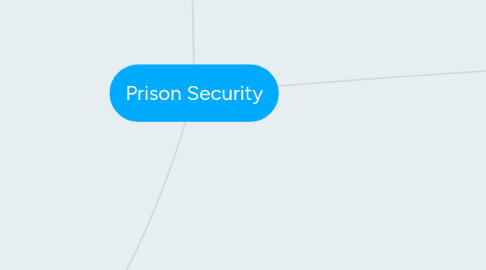
1. The importance of it in custodial environment
1.1. it is used to deter and prevent prisoners from accessing areas they should not be and attempting to escape from prison
2. Dynamic security
2.1. The role of a prison officer
2.1.1. the prison officer look for patterns in intelligence, closely monitoring movement of prisoners and their everyday activities
2.2. constructive regimes
2.2.1. it challenges offending behaviour to try reduces re-offending and prevents further victims
2.3. Intelligence systems
2.3.1. the Systems that they use to collect and analyse information are Listening to prisoner’s phone calls
2.3.2. Reading the mail that they get and they send out . also they something recorded conversations with there visitors
2.4. The importance of a good relationship between the staff and the offenders
2.4.1. if they have a good relationship with them they might get good behaviour out of them and they could tell them information about crime
2.5. the importance of a secure environment
2.5.1. it is important because if it is not secure there is risk of bullying, theft of possessions and that could turn to Self-harming/ suicide
3. Physical security
3.1. security of surrounding area
3.1.1. they use CCTV for security of the surrounding areas
3.2. Patrolling
3.2.1. the Staff need to be vigilant when walking round the prison
4. checks of all security areas
4.1. All areas in the prison may be searched. the Specific areas that they search are due to security intelligence.
4.2. the Routine searches are for example are the kitchens, workshops. Also Dogs are used to assist the prison officer
5. Procedural security
5.1. importance of security procedure
5.1.1. it is to ensures physical and dynamic security policies are carried out by the staff and the staff are train
5.2. identifying possible security risks and ways to deal with them;
5.2.1. The Security risks are the Keys for the prison being taken and confidential information being read
5.3. completion of associated documents and records
5.3.1. it is very important for Documents like Audit trail to be used for Procedural security because it make sure that every thing is secure
6. Search equipment
6.1. they use Physical searches done by humans also they have Portable visual inspection equipment and Infra-red technology
7. The definition of search area
7.1. it is a certain area where the search is being done
8. dealing with physical risks and isolating them
8.1. Physical risks are first identify by staff then they dealt with and then isolate physical risks. they do Risk assessment here they assess Staffing that the prison has got if there was physical risk
8.2. the Management of violent incidents are De-escalation techniques and Self-defence and breakaway techniques. they also Use of segregation and seclusion
9. categorisation of custodial environments
9.1. adult male prison
9.1.1. Category A
9.1.1.1. highly dangerous if escape and for Very serious crimes
9.1.2. Category B
9.1.2.1. they Don’t require maximum security,they are Sentenced to 10 years or more or Previous sentence of 10 years +, Previous escape from closed prison, Police or escort and Current/previous serious offender involving violence, threat to life, firearms, sex, arson, drugs or robbery
9.1.3. Category C
9.1.3.1. Cannot be trusted in open prison but unlikely to try to escape Short sentences, less serious crimes (can’t be open prison due to previous sentence, breach of bail, or could face further charges at court
9.1.4. Category D
9.1.4.1. Reasonably trusted not to try to escape Gived ROTL (Release On Temporary Licence) to study, work or visit on ‘home leave’
9.2. adult female prison
9.2.1. Restricted Status- similar to category A
9.2.2. Closed- women who may attempt to escape
9.2.3. Semi-open – those unlikely to try to escape
9.2.4. Open- those trusted to stay within the prison
9.3. Offenders under 21 years old
9.3.1. Secure training centres Focus on education Holds offenders up to 17 years old
9.3.2. Local authority secure children’s homes Managed by Social Services to Deal with physical, emotional and behavioural needs of vulnerable young people
9.3.3. Juvenile prisons Operated by Prison Service for 15-18 year old
9.3.4. Young Offender Institutions for 18-21 year olds

